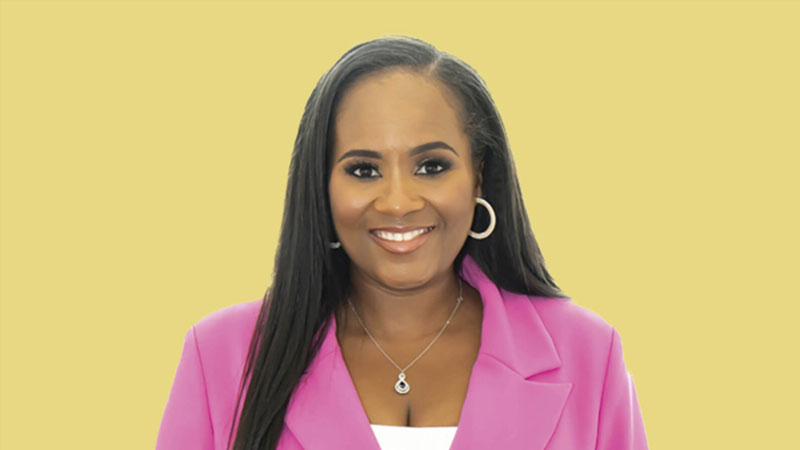Diversification and Burnout Prevention for Counselors
By Ajita M. Robinson, PhD, LPCP
January 2024

As a grief and trauma therapist, author and owner of an eight-figure private practice, my journey in mental health has convinced me of one thing: The path to a resilient and sustainable practice lies in diversification and burnout prevention.
The Necessity of Diversification
The world of private practice therapy isn’t what it used to be. The landscape has shifted, thanks in part to a greater societal acceptance of mental health as a crucial aspect of overall well-being. This surge in demand calls for a significant evolution in our practices, including an intentional focus on diversification.
Diversification is not merely about multiplying income sources; it’s about flexibility and adaptability. By offering a range of services, such as individual and group therapy sessions, workshops, telehealth services and even online courses, you can reach a broader audience and make mental health care more accessible. This diversity not only affects your bottom line but also influences your professional growth and the range of people you can help.
Income diversity can also help decrease burnout among practitioners. In a 2022 article published by the Association of American Medical Colleges, Saul Levin, MD, CEO and medical director of the American Psychiatric Association, said: “We have a chronic shortage of psychiatrists, and it’s going to keep growing.” This statement aligns with the findings from a 2017 report by the National Council for Mental Wellbeing, which projected that the shortage of mental health providers will double by 2025.
Busting Myths about Private Practice
When entering the world of private practice, myths and misconceptions abound. Two common myths include the belief that succeeding in private practice is a solo journey and that you have to be tech savvy. Let’s be clear: Building a successful private practice is often a collaborative effort. Consultation, group practices and professional networks enrich your practice.
You also don’t need to be a tech wizard to thrive. Basic tech literacy suffices for most aspects of modern practice, such as using electronic health records or engaging in teletherapy.
Mental health practitioners often report feeling that they weren’t properly equipped to run a private practice, which reinforces the notion that running a successful practice requires a collaborative approach with other professionals and the community. Many practitioners, especially those in solo practice, don’t need a full-time team; instead, they need auxiliary support in the areas of administrative, marketing, legal and accounting assistance.
Confronting Limiting Beliefs
Limiting beliefs — beliefs that restrict you in some way — can also be detrimental to your success as a private practice therapist. Thoughts such as “I’m not good at business,” “People won’t pay my rates” or “If I desire to make money, I’m a bad therapist” can be barriers to a flourishing practice.
The truth is business skills are acquired and honed over time. And if you provide a service that meets a significant need, clients will pay your rates. The key is to focus on a niche where you can add undeniable value.
Finally, financial stability is necessary to continue to offer therapeutic services to the community. It’s akin to being instructed on an airplane to “put your mask on first” before you’re able to help anyone else.
The Fundamentals of Building a Sustainable Practice
I’m often asked: What are the fundamental pieces needed to have a profitable, thriving practice? Clear branding, effective marketing, professional development, streamlined administration and a CEO mindset are a few key pieces. It’s crucial to define your brand and identify your niche to differentiate yourself in a saturated market.
On the operational side, systems for client acquisition, record-keeping and marketing need to be efficient and effective. We want to be well-positioned in the marketplace, and we want our ideal clients to understand who we serve and how we can help them on their journey.
Here are three things to keep in mind when creating a sustainable practice:>
- Serving in the gap: The gap between demand and supply of mental health services is enormous. The harsh reality is that there’s roughly one mental health professional for every 196 individuals in the U.S., as noted in a 2023 report by the Bureau of Health Workforce. This calls for smart, sustainable practices that not only address this shortage but ensure we, as mental health professionals, don’t succumb to burnout. This is a key reason that diversification of income and services is so critical. We are outnumbered.
- Addressing the gap: To address this professional gap, consider diversifying your services to reach more clients. Teletherapy services can broaden your reach beyond your local community, while specialized services such as art or pet-assisted therapy can differentiate your offerings. Collaborative efforts within your community, such as hosting workshops or seminars, speaking engagements, retreats and psychoeducational courses, can also be an excellent way to reach those who might not otherwise seek therapy.
- Preventing burnout: Burnout isn’t just about being overworked; it’s about feeling underutilized and stuck in a monotonous cycle that drains your professional joy. Early detection is crucial. Make time for self-care, and remember, diversifying your roles within the practice can reinvigorate your love for the work. We have been witnessing a mass exodus of qualified mental health providers at an alarming rate. Burnout, fatigue and economic instability are core issues people listed as reasons they exited the field.
Crafting a resilient practice is not just beneficial for us as mental health providers, but it’s vital for the well-being of the communities we serve. Let’s journey together toward greater resilience and impact.
Key Takeaways
- Diversification isn’t just financial; it’s about professional growth and adaptability.
- A sustainable practice requires a blend of business skills and therapeutic expertise.
- Addressing the professional gap is a collective responsibility, not a solo endeavor.
- Burnout prevention is integral for long-term success and personal well-being.
AUTHOR BIO


